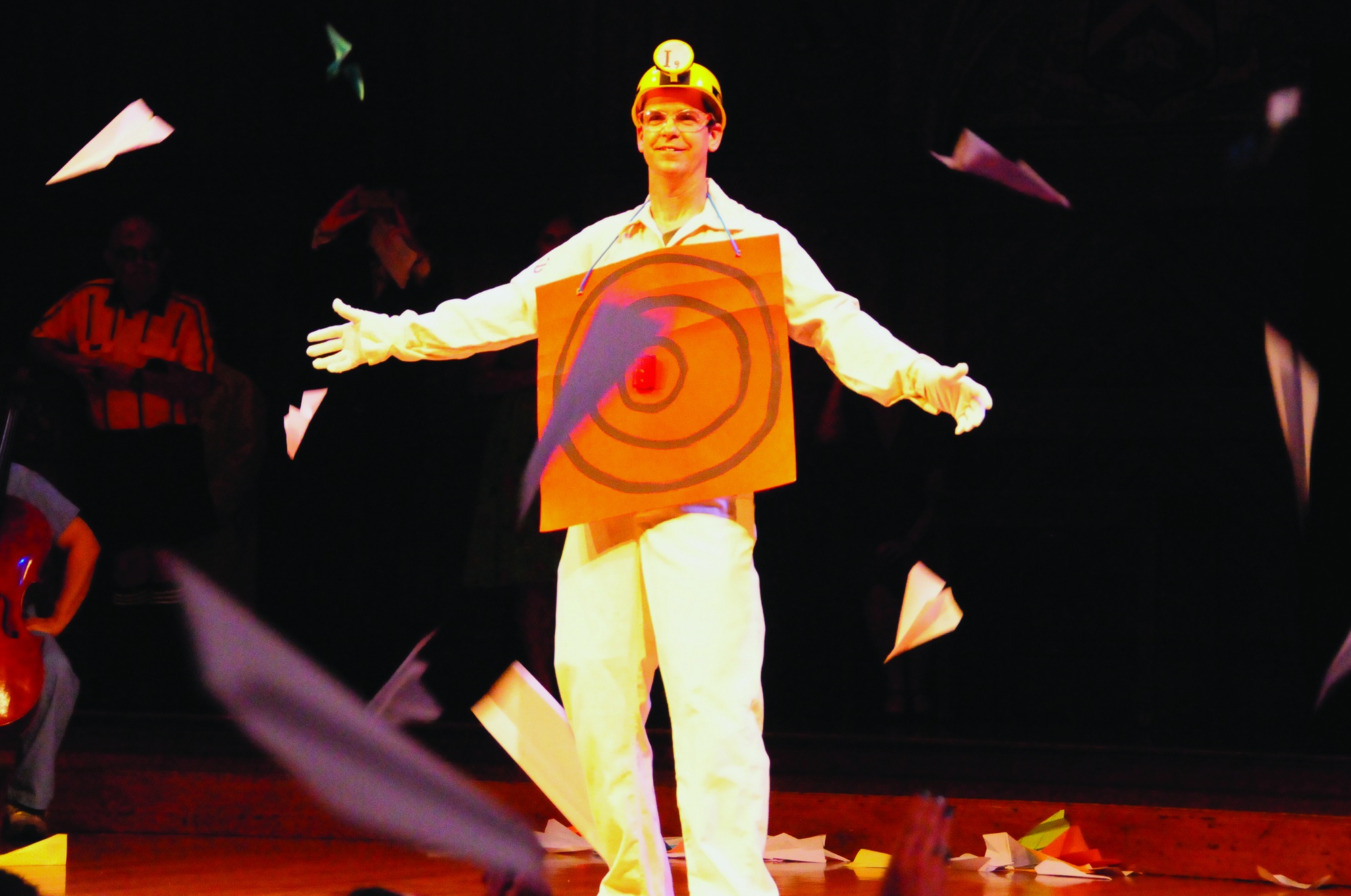
News
Cambridge Residents Slam Council Proposal to Delay Bike Lane Construction

News
‘Gender-Affirming Slay Fest’: Harvard College QSA Hosts Annual Queer Prom

News
‘Not Being Nerds’: Harvard Students Dance to Tinashe at Yardfest

News
Wrongful Death Trial Against CAMHS Employee Over 2015 Student Suicide To Begin Tuesday

News
Cornel West, Harvard Affiliates Call for University to Divest from ‘Israeli Apartheid’ at Rally
Ig Nobel Prize Ceremony Puts Light-Hearted Spin on Science

Hundreds of paper airplanes zoomed across Sanders Theatre early Thursday evening to open this year’s Ig Nobel Prize Ceremony, an event that honors unusual scientific and mathematical achievements.
Following a 22-year-old tradition, over one thousand audience members aimed their makeshift planes at a human target standing onstage. Cheers filled the theater every time one of the planes hit their target.
“We are gathered here to celebrate achievements that make people laugh, then make people think,” Master of Ceremonies Marc A. Abrahams ’78 said.
The annual ceremony was organized by the Annals of Improbable Research, an international science humor magazine, in conjunction with the Harvard-Radcliffe Science Fiction Association and the Harvard-Radcliffe Society of Physics Students.
Established in 1991, the Ig Nobel Prize Ceremony allows Nobel laureates to present ten awards for unusual, imaginative, and quirky research projects. During the ceremony, five Nobel laureates including Eric S. Maskin ’72 and Roy J. Glauber ’45-’46, awarded the winners.
This year, prizes were given for projects ranging from chemistry to probability to public health. Awardees were given 60 seconds to explain their work, after which an eight-year-old girl came up and asked them to stop. Researchers sang, dressed up in mouse costumes, and brought giant red bouncy balls onstage.
The psychology prize, awarded to a paper entitled “Beauty is in the Eye of the Beer Holder,” drew particularly raucous laughter from the audience. The project allowed researchers to “confirm by experiment that people who think they are drunk also think they are attractive.”
“The group of winners this year was just astoundingly unexpected, and that’s what we want,” Abrahams said.
Eric Warrant and Marcus Byrne, two Ig Nobel awardees, first began their research on dung beetles after meeting at a beetle biology contest. They found that dung beetles can use the Milky Way to orient themselves.
Warrant and Byrne said that they were glad their work was receiving so much attention and that the ceremony gave them the chance to share their love for science.
“It’s a serious piece of work, but the humor surrounding the Ig Nobel Prize Ceremony helps bring it out to the general public,” Warrant said.
“We’re not trying to promote dung beetles,” Byrne added. “We’re just trying to promote curiosity in science.”
The ceremony was also punctuated with “moments of science”—science demonstrations including a four-part mini-opera and 60-second lectures on various topics.
Both Nobel laureates and audience members alike said that the event was a celebration of everything that is fun and interesting about science.
“I think [the ceremony’s] contribution to science is smaller than any infinitesimal unit you can name,” said Glauber, who participated in the “Win-a-Date with a Nobel Laureate” Contest. “But if it’s fun, you have to reckon that there is something positive.”
Whitney Nimitpattana ’15, who attended the event with friends from the Harvard-Radcliffe Society of Physics Students, said that she had been looking forward to attending the ceremony since high school.
“It’s a great way to make science really accessible to the public,” Nimitpattana said. “Plus, it’s the best nerd gathering ever. As a self-proclaimed nerd, I can attest to that.”
—Staff writer Michelle Denise L. Ferreol can be reached at michelle.ferreol@thecrimson.com. Follow her on Twitter @michiferreol.
Want to keep up with breaking news? Subscribe to our email newsletter.
